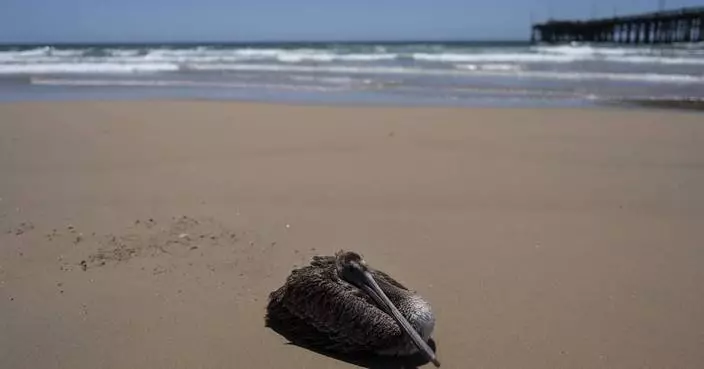DUBAI, United Arab Emirates--(BUSINESS WIRE)--Mar 29, 2024--
Dubai Electricity and Water Authority PJSC (ISIN: AED001801011 ) (Symbol: DEWA ), the Emirate of Dubai’s exclusive electricity and water services provider and majority owner of the largest cooling services provider, which is listed on the Dubai Financial Market ( DFM ), reported that its shareholders have, in the general assembly held on March 28 th, 2024, approved the payment of total dividend of AED 3.1 billion with a record date of April 8 th, 2024.
This press release features multimedia. View the full release here: https://www.businesswire.com/news/home/20240329162756/en/
General Assembly Details
The meeting, chaired by HE Matar Humaid Al Tayer, Chairman of the Board of Directors of DEWA, was attended by HE Saeed Mohammed Al Tayer, MD & CEO of DEWA and Members of the Board of Directors of DEWA as well as 85.9% of the shareholders. The assembly was held on Thursday (28 th March 2024) at the Kempinski Boulevard Hotel in Dubai as well as virtually.
Attractive Dividend Yield
For shareholders who are invested in DEWA’s shares prior to the dividend record date of April 8 th, 2024 (with a Last Entitlement Date of April 4 th, 2024), the next twelve-month dividend yield is 5.0% with reference to IPO share price of AED 2.48 per share.
“Thanks to the insightful vision and wise directives of our wise leadership, Dubai has become a global hub for trade, finance, tourism, and green economy. DEWA plays a crucial role in ensuring that Dubai’s infrastructure keeps pace with the increasing demand for energy and water. Our unwavering efforts have contributed to DEWA’s record of achievements, highlighted the transition to clean energy and established DEWA’s global leadership,” said HE Matar Al Tayer.
“Looking ahead, I am optimistic about our operating and financial outlook for 2024. The surge in tourism, growth in the residential and commercial demand for our services and the rising active day-time population in the Emirate are promising indicators of further opportunities to grow our business. In 2023, DEWA’s annual revenue exceeded AED 29 billion, operating profit was over AED 8.7 billion and EBITDA was over AED 14.7 billion, all figures reflecting the highest in its history,” said HE Saeed Al Tayer.
More information on DEWA’s website: https://www.dewa.gov.ae/en/investor-relations
and DFM’s website
https://www.dfm.ae/en/issuers/listed-securities/securities/company-profile-page?id=DEWA
Source:AETOSWire


Dubai Electricity and Water Authority PJSC shareholders approve payment of AED 3.1 billion in dividends (Photo: AETOSWire)

Dubai Electricity and Water Authority PJSC shareholders approve payment of AED 3.1 billion in dividends (Photo: AETOSWire)
DJENNE, Mali (AP) — Thousands of Malians carrying buckets and jugs of mud joined the annual replastering of the world's largest mud-brick building this weekend, a key ritual that maintains the integrity of the Great Mosque of Djenne in the center of the country.
The building has been on UNESCO’s World Heritage in Danger list since 2016. The mosque and surrounding town, a historical center of Islamic learning, have been threatened by conflict between Islamist rebels, government forces and other groups.
Djenne’s mosque requires a new layer of mud each year before the rainy season starts in June, or the building will fall into disrepair. The replastering event once drew tens of thousands of tourists each year. As with the rest of Mali, Djenne’s tourism industry has all but completely disappeared.
“The plastering of the mosque is a symbol of peace. The poor, the rich, everyone is here for this activity." Amadou Ampate Cisse, a Djenne resident taking part in the event, told The Associated Press: "We will continue this tradition from generation to generation. We will pass it on to our children and they in turn will do the same.”
Traditionally, women and girls fetch water from the nearby river to mix with clay to make the mud, and men and boys climb the mosque and apply the new layer.
Moussa Moriba Diakité, head of Djenne’s cultural mission, said insecurity has threatened the annual event. “A lot of people talk about insecurity, and we hear that we can’t come to Djenne because there is insecurity,” he said.
Despite the disappearance of Djenne's tourism industry, the maintenance of the mosque is something that must continue “at any cost," Diakité said, to preserve the country’s cultural heritage.
Mali, along with its neighbors Burkina Faso and Niger, is battling an insurgency by armed groups, including some allied with al-Qaida and the Islamic State group. Following military coups in all three nations in recent years, the ruling juntas have expelled French forces and turned to Russia’s mercenary units for security assistance.
The Associated Press receives financial support for global health and development coverage in Africa from the Bill & Melinda Gates Foundation Trust. The AP is solely responsible for all content. Find AP’s standards for working with philanthropies, a list of supporters and funded coverage areas at AP.org.

The world's largest mud-brick building, the Great Mosque of Djenne, Mali, awaits its annual replastering, Friday, May 10, 2024. The building has been on UNESCO's World Heritage in Danger list since 2016. The mosque and surrounding town are threatened by conflict. Djenne's mosque requires a new layer of mud each year before the start of the rainy season in June. (AP Photo/Moustapha Diallo)

Malians take part in the annual replastering of the world's largest mud-brick building, the Great Mosque of Djenne, Mali, Sunday, May 12, 2024. The building has been on UNESCO's World Heritage in Danger list since 2016. The mosque and surrounding town are threatened by conflict. Djenne's mosque requires a new layer of mud each year before the start of the rainy season in June. (AP Photo/Moustapha Diallo)

Malians take part in the annual replastering of the world's largest mud-brick building, the Great Mosque of Djenne, Mali, Sunday, May 12, 2024. The building has been on UNESCO's World Heritage in Danger list since 2016. The mosque and surrounding town are threatened by conflict. Djenne's mosque requires a new layer of mud each year before the start of the rainy season in June. (AP Photo/Moustapha Diallo)

Malians gather at the foot of the Great Mosque of Djenne, Mali, joining in for the annual replastering of the world's largest mud-brick building, Sunday, May 12, 2024. The building has been on UNESCO's World Heritage in Danger list since 2016. The mosque and surrounding town are threatened by conflict. Djenne's mosque requires a new layer of mud each year before the start of the rainy season in June. (AP Photo/Moustapha Diallo)

Malians take part in the annual replastering of the world's largest mud-brick building, the Great Mosque of Djenne, Mali, Sunday, May 12, 2024. The building has been on UNESCO's World Heritage in Danger list since 2016. The mosque and surrounding town are threatened by conflict. Djenne's mosque requires a new layer of mud each year before the start of the rainy season in June. (AP Photo/Moustapha Diallo)

Malians take part in the annual replastering of the world's largest mud-brick building, the Great Mosque of Djenne, Mali, Sunday, May 12, 2024. The building has been on UNESCO's World Heritage in Danger list since 2016. The mosque and surrounding town are threatened by conflict. Djenne's mosque requires a new layer of mud each year before the start of the rainy season in June. (AP Photo/Moustapha Diallo)

Malians take part in the annual replastering of the world's largest mud-brick building, the Great Mosque of Djenne, Mali, Sunday, May 12, 2024. The building has been on UNESCO's World Heritage in Danger list since 2016. The mosque and surrounding town are threatened by conflict. Djenne's mosque requires a new layer of mud each year before the start of the rainy season in June. (AP Photo/Moustapha Diallo)

Malians take part in the annual replastering of the world's largest mud-brick building, the Great Mosque of Djenne, Mali, Sunday, May 12, 2024. The building has been on UNESCO's World Heritage in Danger list since 2016. The mosque and surrounding town are threatened by conflict. Djenne's mosque requires a new layer of mud each year before the start of the rainy season in June. (AP Photo/Moustapha Diallo)




















